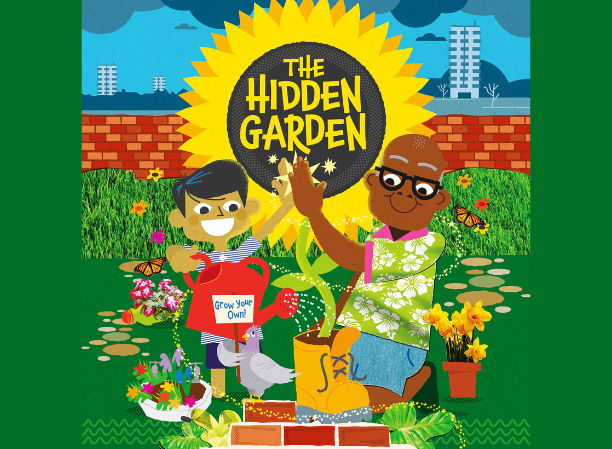Where did the idea for The Hidden Garden come from?
The idea for the show came during lockdown, when lots of people gravitated to local green spaces. However, it was clear that many people didn’t have access to such spaces, and we knew from our previous work in schools, that lots of children living in cities didn’t feel that their local park was a welcoming or safe space. It was also around this time that the use of food banks significantly hit the headlines, and again, we knew from schools that high numbers of children live in food poverty. These two issues were the first seeds from which the play grew. Over the ensuing R&D’s, the different people and communities involved in the process (both artists and partners) helped to shape the other elements that are now a part of the story. However, from the very beginning we knew that we wanted this to be a hopeful story, where community and friendship offered a way through hardship.
Can you tell us about the mechanical elements in the play?
From early on, we knew that we wanted to tell this story over a period of time, with the Man and Boy’s friendship growing alongside the garden – this is where the idea of showing the seasonal changes came from. But this left us with the question of how to do this? Many years ago, I directed a show that featured shadow play, it had a moment in it where an object passed from shadow into reality. The children loved this for what it represented in the story, but they were also fascinated by how we had made it happen. We wanted something similar for The Hidden Garden, and integrating mechanical elements allows us to do this in a way that will hopefully inspire curiosity and delight. The audience will witness the seasonal transformations magically take place in front of their eyes – flowers pop out of pots, peas climb up canes, and seedlings are shown at various stages of growth by flipping wall-mounted pots around giving the illusion that they have grown live on stage. These will sometimes be operated from behind the scenes so as to magically grow in front of the audience, and sometimes will be done by the actors in the scenes both in a concealed way and visible to the audience.
How important was it to have children involved in the R&D?
Essential. We are not in the business of telling stories for, but with children. It was really important to us that the Boy reflected the real-life experiences that many children have, and the way in which they see the world, but also that we pitch the humour and playful elements at a level that children will enjoy. We took a similar approach to creating the character of the Man, working with people and communities with experiences of displacement and sanctuary-seeking, thinking carefully about how we frame these sensitive issues and inviting groups to give feedback on work in-progress. This has given us a foundation as storytellers and artists specialising in theatre for family audiences, to grow a resonant, joyful and hopeful story.
Why should people come to see The Hidden Garden and what makes it unique to others out there?
There are so many different ways in which you can experience this show; a joyful story of friendship and fun; a hopeful tale that shines light on some difficult issues; a story in which audiences can see something of themselves, but always playful, beautifully made and uplifting.
The Hidden Garden comes to Z-arts on Saturday 21 September, with £5 tickets and performances at 11am & 2pm. Book tickets here!

